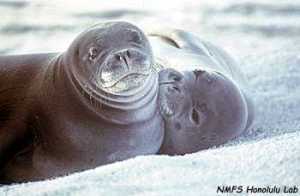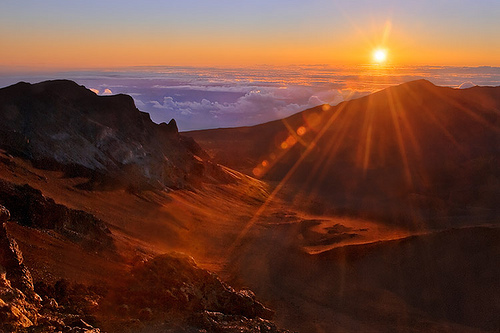Blog
News, updates, finds, stories, and tidbits from staff and community members at KAHEA. Got something to share? Email us at: kahea-alliance@hawaii.rr.com.
How many telescopes?
From Alana:
Following last night’s passionate hearing regarding the proposed Mauna Kea Thirty-meter telescope, a letter to the editor to was sent to The Star Bulletin strongly opposing the telescope. The letter details the long history of cheating and cutting corners, in terms of environmental and cultural laws, that Mauna Kea developers have had.
Testifiers at last week’s Hilo EIS meeting revealed that the EIS presented a lesser number of telescopes in the science reserve than in previous documents — by changing how they’re counted. Did this new counting strategy intend to leave the impression the TMT would fit within the “11 major telescope” limit mandated in the 1985 management plan approved by Board of Land and Natural Resources? The land board established that limit specifically to prevent astronomy interests from “taking over” the mountaintop. One person at the Hilo meeting counted, in front of everyone, 21 domes or antennas already on the mountain.
UH claims to have changed, and that its building practices will be better, but there is nothing in their plan that can attest to that claim– especially in a plan that blatantly lies about the number of telescopes on Mauna Kea.
For the whole letter, written by Catherine Robbins (Volcano, HI) click here.
Hooray for No Bioprospecting in the NWHI!
From: Andrea
Good news: bioprospecting is now prohibited in the Papahanaumokuakea Marine National Monument!
KAHEA has been pushing for this prohibition from the beginning of the Northwestern Hawaiian Islands’ protection. State permits have prohibited bioprospecting for some time. But, with only permits issued in the state refuge prohibiting bioprospecting, the entire Monument was not protected.
But, now, the federal co-trustees are prohibiting bioprospecting, too. KAHEA’s victory is evident in the Final Monument Management Plan where the prohibition on bioprospecting is required on all permits issued in the Monument.
Prohibiting bioprospecting in this irreplacable locale is necessary to protect fully the Monument and its cultural and natural resources. Bioprospecting, essentially, entails the search for new chemical compounds, genes, and their products in living things that will have value to people, often through development of marketable commodities like pesticides, pharmaceuticals, and cosmetics.
Thanks to the prohibition, our public trust resources are prioritized for their conservation, not their profitability. No opportunity to plunder for profit in the Monument- at least not legally.
Commenting on the Draft Science Plan, KAHEA continues to urge for responsible science in the Monument. To learn more about responsible science:
http://www.kahea.org/more.php?id=451_0_3_0_C
Shrug it off or contemplate security on the ground level?
From: Andrea
The article says Hawaiians are shrugging off the North Korean missile threat.
http://www.nytimes.com/2009/06/23/us/23hawaii.html?ref=americas
After all, Hawaiians are accustomed to the various threats and dangers of inhabiting the Planet’s most isolated archipelago. We are out here far from quick and convenient aid from the mainland.
But, perhaps, this threat should be an opportunity to reconsider how secure and independent Hawaii truly is, out here in the middle of the Pacific. While it may not be time to start worrying about missiles and the universe of possible terroristic threats, which may be unstoppable on a community level, the time is ripe to consider security the people of Hawaii can control.
For instance, food security is something as tangible as dirt in your hands and food in your belly. Obvious to everyone who buys groceries around here, a huge amount of food sold in stores is imported, reflected by the price. The exact percentage of imported food may be debatable, but the need for more food production here in Hawaii is undebatable.
What’s an easy way to improve food security here in Hawaii? Support local farmers markets! For instance:
Kapiolani Community College Farmers Market
4303 Diamond Head Road
Honolulu, HI 96805
Saturdays, 7:30 a.m. – 11 a.m.
For more info, see:
Empty Reefs
From Alana:
This BBC News video shows how the growing demand for fish in places like inland China is putting a huge stress on coral reefs. Most adult fish have been caught, so the majority of fish sold in markets are juveniles that have not had a chance to reproduce yet. Because of this trend there has been a downward spiral in fish populations and reef health worldwide.
The world needs stricter fishing regulations ASAP, and if that doesn’t happen we will probably see the collapse of entire ocean ecosystems in our lifetimes.
Monk Seals Compete with Fishing Industry for Food
From Melissa:
Much is being done in the way of critical habitat designation to ensure the survival of the Hawaiian monk seal. Is it enough though? These precious creatures inhabit the Northwest Hawaiian Islands (NWHI) and are at high risk of becoming extinct due to death caused by starvation, predation, males accidentally killing females in the mating process and entanglement in fishing gear.
enough though? These precious creatures inhabit the Northwest Hawaiian Islands (NWHI) and are at high risk of becoming extinct due to death caused by starvation, predation, males accidentally killing females in the mating process and entanglement in fishing gear.
NOAA decided last year the Caribbean monk seals had become extinct, and has observed that the Hawaiian breed has reached a population of about 1,200, declining by abut 4 percent a year during this decade. Federal Judge Samuel King noted nine years ago that it was likely that the fishing industry “contributes to the starvation of the monk seals,” but fisheries strongly deny it.
For whatever reason, the seals apparently are not getting enough to eat. Fitted with compact video cameras in a National Geographic project from 1995 to 2002, they were seen dining on a wide variety of crustaceans, squid, octopus and fish, competing for food with large and hungry ulua.
Should more restrictions and rules be enforced in the critical habitat of the Hawaiian monk seal? As of today, eight fishing boats based out of Honolulu are permitted to fish in certain areas of the NWHI, one of which, very recently was caught fishing in a restricted area. These vessels catch approximately half of the locally landed bottomfish in Hawaii. By revoking these permits, the fish populations will likely replenish, leading to more food for the monk seals thus less starvation. Could this be the way to go to further protect the monk seals or would it just enrage the fishing industry?
To read the full article follow this link:
To learn more about this issue please follow the link provided:
All Talk, No Action
From Andrea:
I attended the Reserve Advisory Council meetings on the Draft Science Plan for Papahanaumokuakea Marine National Monument last Tuesday and Wednesday. After two full days of meetings, I left thinking the whole process was, in the words of Shakespeare, “full of sound and fury, signifying nothing.”
The Reserve Advisory Council is a citizen advisory body with the important responsibility of providing advice and recommendations to the co-trustees (via NOAA’s representation) on management of our beloved Papahanaumokuakea Marine National Monument. The Draft Science Plan discussed at this meeting prioritizes research activities, meaning this plan determines what access and activities will be allowed for research within the protected Northwestern Hawaiian Islands. What access and activities are allowed within the Monument determines, ultimately, what on-the-ground level of conservation the Monument will be afforded.
These two long days of meetings, full of heated debates and hammering out precise language for this important Science Plan, led to…well, nothing! The Reserve Advisory Council (RAC) did not even have the necessary quorom- that is, minimum number of members necessary to make decisions and carry out their function, leading me to wonder why everyone spent two long, full days for all talk, no action.
I was particularly frustrated that the RAC went through all the motions but in the end lacked quorom because I have issues with the draft Science Plan. Under the Plan’s prioritization system of permits, most potential activities for permitting were ranked as “critical” or “high” priority. Can you call it “prioritized,” if everything is deemed important? Such a high proportion of activities deemed to be “critical” and “high” priority implicates a high proportion of permitted activities in the Monument, which was originally established under a guideline of no access unless permitted. Clearly, the prioritization system needs some refining to serve the purpose of the Monument.
I am afraid to report that, as the draft Science Plan stands now, access into this protected Monument via the permitting system will not be much of a hurdle. Just as one example, the Science Plan’s risk analysis section asks “what is the harm of NOT conducting the research,” without ever asking “what is the harm” of conducting it. How can you assess whether a proposed research project is worth the risk it poses to the environment, if you never ask the question?
Clearly, the Science Plan needs a lot more work. Unfortunately, who knows when the RAC will have the necessary attendance to decide on revisions to the Science Plan. I guess the system for determining which permits are granted in the Northwestern Hawaiian Islands will have to be put on hold until enough RAC members decide to fulfill their duty of attending RAC meetings. Otherwise, the plan may be adopted without genuine oversight and input from the “citizen’s” advisory group.
Action Alert: Unite to Save the Scared Summits!
 Plans for major construction in the sensitive ecosystems of our most sacred summits continue to push forward, despite significant opposition from the community. The University of Hawaii has filed two environmental impact statements — one for the world’s largest telescope in the world’s only tropical alpine desert, and another for a duplicative solar telescope in one of the most threatened national parks in the U.S. Both of these projects can be built in less sensitive areas.
Plans for major construction in the sensitive ecosystems of our most sacred summits continue to push forward, despite significant opposition from the community. The University of Hawaii has filed two environmental impact statements — one for the world’s largest telescope in the world’s only tropical alpine desert, and another for a duplicative solar telescope in one of the most threatened national parks in the U.S. Both of these projects can be built in less sensitive areas.
Though both summits are protected as conservation districts, where the law expressly discourages construction, the University refuses to compromise, insisting that these giant, intrusive structures be built where they will cause the most harm.
Don’t let good science be used to justify unnecessary ecological destruction and cultural disrespect. Take action now to defend our sacred, fragile summits.
1)
Protect Haleakala — the House of the Sun — from another, unnecessary solar telescope
2) Defend the Sacred Summit of Mauna Kea from the World’s Largest Telescope
Public hearings on the proposal to build the world’s largest telescope on Mauna Kea are being held now. All meetings are 5 to 8 p.m., with an open house in the beginning, followed by formal presentations, and then comments from the public.
Public Hearings on the New Mauna Kea Telescope Proposal
June 16 (Tuesday) Waimea – Waimea Elementary School Cafeteria
June 17 (Wednesday) Hilo – Hilo High School Cafeteria
June 18 (Thursday) Puna – Pahoa High School Cafeteria
June 22 (Monday) Ka’u – Ka’u High/Pahala Elementary School Cafeteria
June 23 (Tuesday) Hawi – Kohala Cultural Center
June 24 (Wednesday) Kona – Kealakehe Elementary School Cafeteria
June 25 (Thursday) Honolulu – Farrington High School Cafeteria
The Draft EIS is available on the Project website – www.TMT-HawaiiEIS.org – and hard copies can be found at public libraries throughout Hawaii.
Get action alerts like these sent directly to your inbox by signing up with KAHEA’s action alert network at www.kahea.org.





